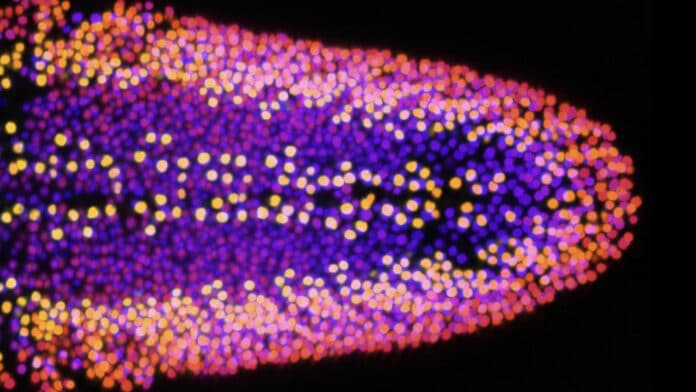Atypical proteins that create tangles in the brain and destroy neurons result in neurodegenerative disorders.
Neurobiologists at EPFL have now identified some key mechanisms underlying the formation of these tangles. They also observed cell vulnerability early on in neurodegeneration.
According to scientists, stopping or decelerating the earliest disconnection of neurons could slow down the subsequent steps as neurons start to degenerate.
In this study, scientists engineered adult-onset models for human Tau (hTau) toxicity in Drosophila (fruit fly). This enabled age-dependent quantitative measurement of central nervous system synapse loss and axonal degeneration, as well as effects on lifespan, to facilitate the evaluation of factors contributing to Tau-dependent neurodegeneration. Tau is a protein involved in Alzheimer’s disease and other disorders that lead to dementia.
Scientists found that the flies, who expressed human Tau, had a shorter lifespan than controls. They later accessed the effect of human Tau on the brain using a series of genetic, microscopy, and computational technologies that allowed accurate imaging of individual neurons.
This is the first time scientists could look at neurodegeneration at the single-neuron level in the context of an adult brain.
Compared to controls, flies expressing human Tau showed a substantial loss of synapses or connections between neurons. In these animals, the neurons’ axons also shrank and retracted.
Study senior author Brian McCabe, director of the Laboratory of Neural Genetics and Disease and a Professor at the EPFL School of Life Sciences, said, “By the time the axon was retracted, the neurons were no longer part of a functional circuit. We need to intervene in these very early stages because when neurons are dying, the battle is already lost.”
Additional research revealed that neurodegeneration is accelerated by the loss of the retromer, a protein complex that can be mutated in persons with Parkinson’s disease. The retromer functions as the recycling system, rescuing proteins from being broken down and trafficking them back to the cell’s surface. Blocking the activity of the retromer complex leads to increased levels of a shortened form of Tau that exacerbates neurotoxicity.
Scientists noted, “When retromer activity is reduced, Tau proteins linger for longer inside the cell, where they get ‘trimmed’ by specialized enzymes called caspases. Indeed, inhibiting the production of the shortened form of Tau could stall the loss of synapses and axons.”
McCabe said, “The findings suggest that dampening retromer activity slows down the trafficking of Tau. This ‘traffic jam’ allows caspases to cut Tau into a shorter form that can damage neurons. Identifying drugs that enhance the trafficking of Tau might help reduce neurotoxicity.”
“If the shortened form of Tau is a diagnostic marker for brains affected by Alzheimer’s and Parkinson’s disease, the levels of this atypical protein could be employed in drug screening as a proxy for drug efficacy.”
Scientists are continuing to understand the earliest steps in neurodegeneration.
Journal Reference:
- Asadzadeh, J., Ruchti, E., Jiao, W. et al. Retromer deficiency in Tauopathy models enhances the truncation and toxicity of Tau. Nat Commun 13, 5049 (2022). DOI: 10.1038/s41467-022-32683-5
